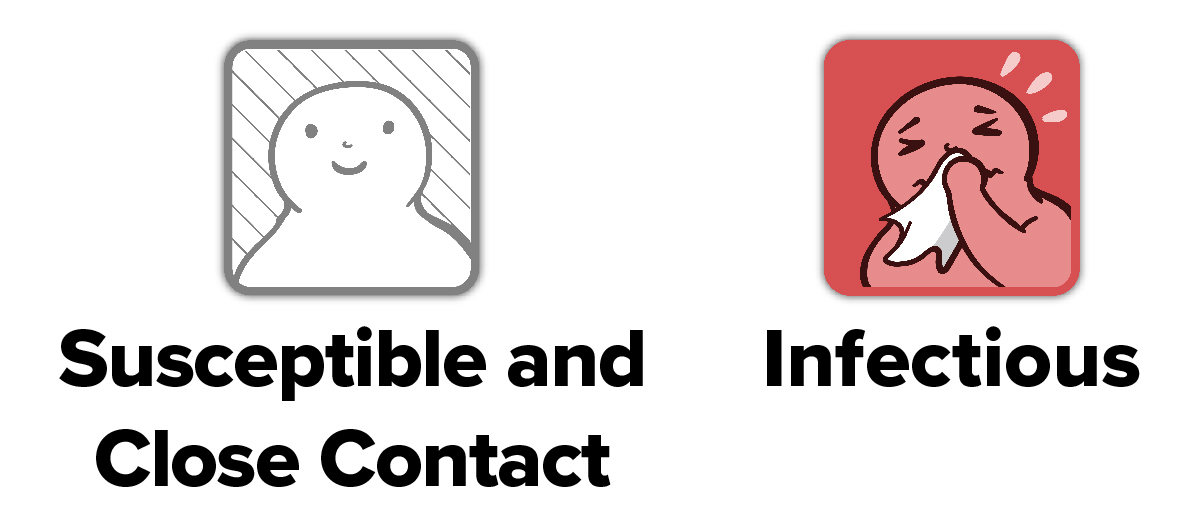Disease Spread Background
Additional factors can be used to measure how a pathogen spreads and predict whether an epidemic may occur. In this section, you’ll learn about two such factors: the basic reproduction number (R0) and the effective reproduction number (Re).
Measuring Early Disease Spread
One way to measure the potential spread of a pathogen at the very beginning of an epidemic is by calculating the basic reproduction number (R0). R0, pronounced R-naught, is the average number of individuals a single infectious individual will infect throughout the duration of their infection, if everyone else in the population is susceptible.
R0 is related to the transmission rate (t) and the recovery rate (r) as follows:

Table 1 explains how to interpret different values of R0. Table 2 lists values of R0 for some example diseases.
| Disease Cases | Likely Outcome | |
|---|---|---|
| R0 > 1 | Increase | Disease will spread to an increasing number of individuals (exponentially) and can become an epidemic. |
| R0 < 1 | Decrease | Disease will eventually die out. No epidemic. |
| R0 = 1 | Stay the same | Disease will be maintained at baseline level. No epidemic. |
| Disease | Pathogen | Estimated R0 |
|---|---|---|
| Flu | Influenza virus (seasonal) | 1.1 – 3.4 |
| Common cold | Rhinovirus | 2 – 3 |
| COVID-19 | SARS-CoV-2 (ancestral strain) | 2.4 – 3.4 |
| HIV/AIDS | Human immunodeficiency virus (HIV) | 2 – 5 |
| Measles | Measles virus | 12 – 18 |
Measuring Later Disease Spread
As a disease spreads, more individuals typically gain immunity to the pathogen and enter the removed group. Since they are no longer susceptible to becoming infected, there are fewer individuals that the pathogen can spread to.
To measure the spread of a pathogen at this point, we can use the effective reproduction number (Re) instead of R0. Re, which is also known as Rt, is the average number of individuals a single infectious individual will infect throughout the duration of their infection, if some individuals in the population are immune.
Re is related to R0, the number of susceptible individuals (S), and the total number of individuals in the population (N) as follows:
Re can also measure disease spread in a population that has implemented control measures: policies that aim to reduce transmission by reducing the number of susceptible individuals or their interactions with infectious individuals. Examples of control measures include vaccines, lockdowns and social distancing.
Values of Re can be interpreted similarly to the values of R0 in Table 1. For example, reducing Re below 1 using control measures can make the disease eventually die out and prevent an epidemic from occurring.
